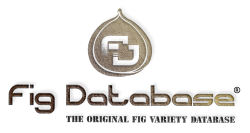When you click on links to various merchants on this site and make a purchase, as an Amazon Associate and eBay partner member, I earn from qualifying purchases.

- Welcome to Fig Database! A customized, searchable database of edible fig varieties with advanced search, filtering, ratings, blog and market place from and for fig collectors like yourself. We provide Figdatabase.com to you for information in the field of figs.
- admin@figdatabase.com

